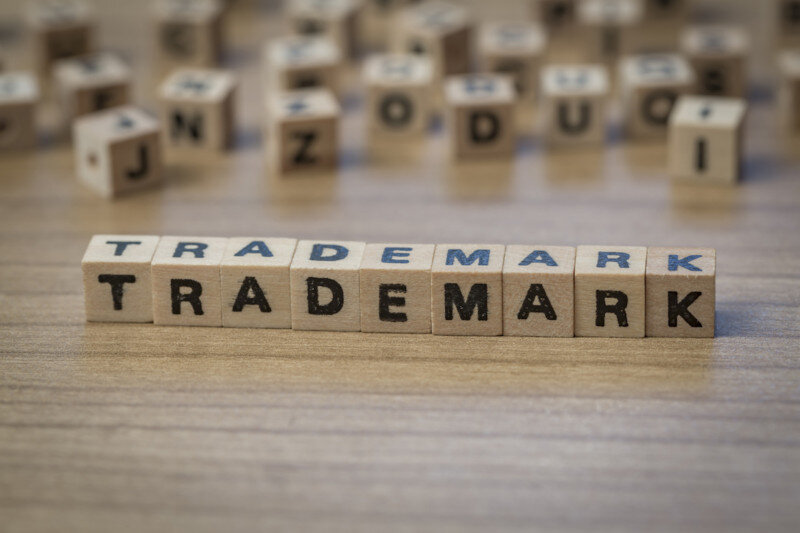One of the many risks business owners face is one that rarely comes to mind—but could put your business in a dangerous position. We’re talking about trademark protection for your intellectual property. A trademark is a word, phrase, name, or symbol that identifies the source of a product or service and distinguishes it from competitors. You can trademark your company name, product names, logos, and taglines.
Running a Business Without Trademark Protection
Without the protection of a federally registered trademark:
- Your company or product name could be stolen. Without trademark ownership, it’s easier for companies in other states or other countries to hijack your brand.
- Your business could be at risk of infringing on another company’s registered trademark which could result in lawsuits, etc.
- You could be unknowingly be using an unregistrable trademark for your brand. The US. Patent and Trademark Office (USPTO) has specific requirements for registered trademarks such as the trademark cannot be confusing, generic, or insulting in any way.
- Another company can use a similar trademark and you don’t have the ability to stop them.
- If you decide to sell your company, you cannot sell an unregistered trademark to the next owner.
It’s important to note that just because you register your business name in your state, that is not the same as, nor does it offer the same protections as a registered trademark. (Although, a state application for a business name and actually using the business name goes a long in showing your commitment to your brand—something the USPTO looks at when deciding on a trademark.) However, a state’s authorization to form a business with a particular name does not give your business trademark rights and other parties could try to prevent your use of the business name if they believe confusion might arise with their trademarks.
Likewise, securing a domain name for your company is in no way considered trademark protection. Domain names are acquired and registered through an accredited domain name registrar and usage could be taken away from you if it is determined to infringe on someone else’s trademark rights.
Filing a Trademark Application
As of February 15, 2020, you must file your trademark application and all related documents online using the Trademark Electronic Application System (TEAS). Whether you do so directly, through an attorney, or through a third-party understand the application and approval process is time-consuming, especially if there are complexities with your desired mark and other conflicting marks exist. CorpNet can prepare your application within 48 hours. We have the experience you need in filling out the complicated application and can expedite the process.
Briefly, the steps involved include:
- Identifying your “basis” for filing. Most U.S. applicants base their application on either their current use of the mark in commerce or their intent to use the mark in commerce in the future.
- Searching for similar trademarks.
- Uploading a “standard character” or “special form” drawing of the trademark. The standard character trademark is words only and the special form has some design element.
- Accurately listing goods and/or services identified with the trademark. Appropriate words can be found in the USPTO Acceptable Identification of Goods and Services Manual.
- Pay the filing fee.
You may also be asked to submit a “specimen” which shows your trademark in use, such as on a web page or in your marketing materials.
After you file, you are issued a registration number so you can check on the status of your application. You may be contacted if there are any more documents needed or questions to be answered. Once your application is approved, then you must use it consistently and in a high-quality manner. Why? The U.S. trademark system is based on use and poor use could be basis for another company to take it away from you.
You will also be required to file a “Declaration of Use” to show you are responsibly and consistently using your trademark between the fifth and sixth year after your trademark has been registered. Then, between the ninth and tenth year, you need to file a combined “Declaration of Use (or Excusable Nonuse)” and “Application for Renewal” to continue ownership of the trademark. You must refile for ownership every 10 years.
Multiple Trademark Owners
The purpose of the trademark is two-fold:
- The protection of the business’s intellectual property and
- The protection of the consumer in that the trademark identifies the single source of the goods or services.
Therefore, multiple ownership of a trademark can only be granted if the owners have joint control over the nature and the quality of the goods and/or services. Also, unless specifically stated otherwise in a contract between the owners, in the eyes of the USPTO, multiple ownership of the trademark is equally shared.
There are several reasons business owners may file for multiple ownership of a trademark, such as in a sole proprietorship or partnership with co-owners each wanting ownership of the trademark. Also, the trademark may be co-owned between a manufacturer and distributor. In any case, all owners must fill out and sign the application and are held responsible for the integrity of the trademark.
It is up to the parties involved to create a legal contract indicating joint ownership, otherwise, in case of ownership disputes the courts will look at several factors to determine ownership, such as:
- Which party first created and used the mark
- Which party’s business name appears with the trademark on packaging and marketing materials
- Which party maintains the quality of the mark
- Which party is perceived as the owner by the consumer
- Which party pays for advertising
One option many business owners choose when it comes to multiple trademark ownership is to form a separate legal entity for the trademark. By forming a C Corporation or a Limited Liability Company (LLC), the multiple owners can apply for a trademark under the corporation and the trademark then belongs to the corporation for eternity. The corporation is then responsible for the quality control and usage of the trademark, in addition to paying filing fees and meeting renewal deadlines.
Forming a corporation or LLC also protects the owners from any personal liability when it comes to trademark misuse or if someone comes after your company for trademark infringement. Need help in choosing the right structure for your business? CorpNet is ready to assist.





